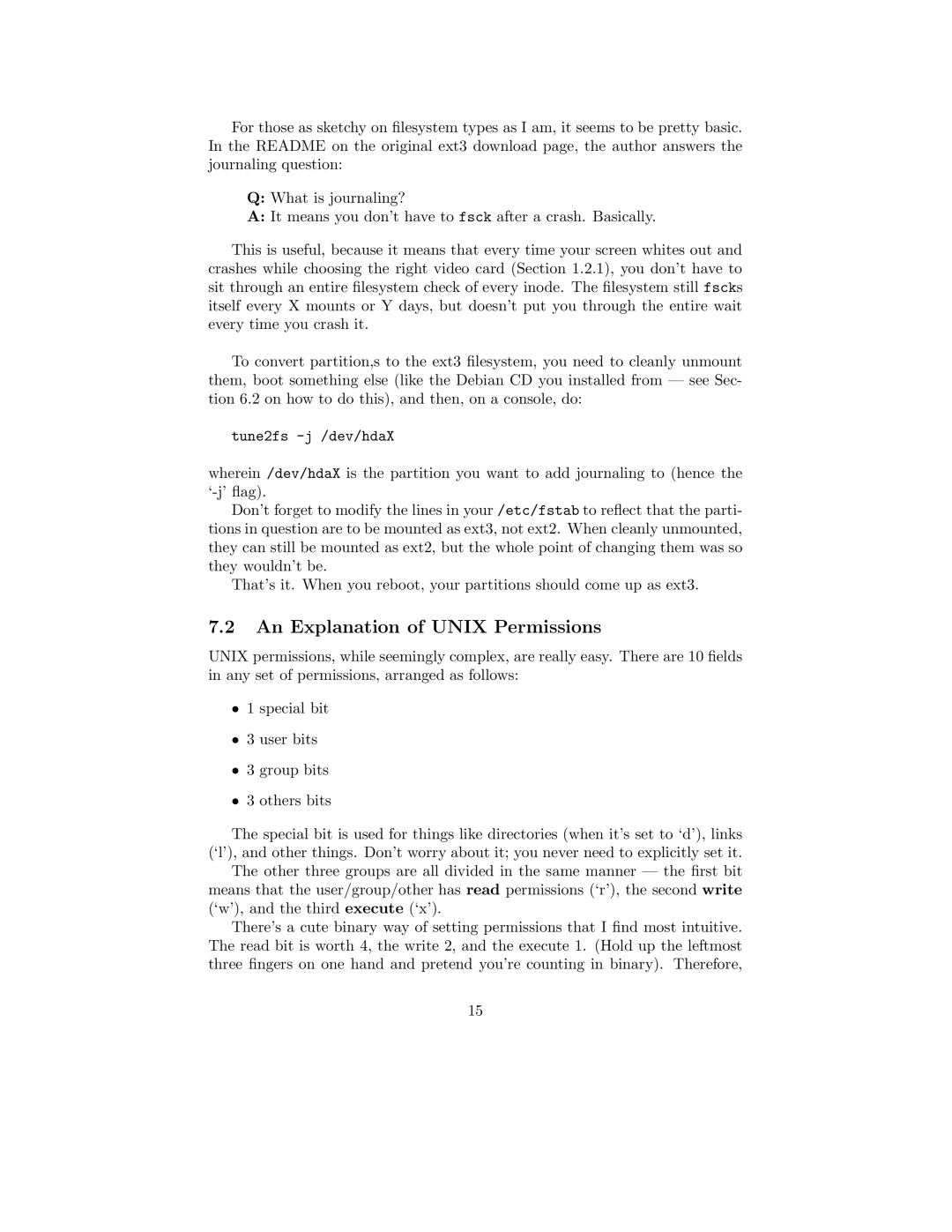For those as sketchy on filesystem types as I am, it seems to be pretty basic. In the README on the original ext3 download page, the author answers the journaling question:
Q:What is journaling?
A:It means you don’t have to fsck after a crash. Basically.
This is useful, because it means that every time your screen whites out and crashes while choosing the right video card (Section 1.2.1), you don’t have to sit through an entire filesystem check of every inode. The filesystem still fscks itself every X mounts or Y days, but doesn’t put you through the entire wait every time you crash it.
To convert partition,s to the ext3 filesystem, you need to cleanly unmount them, boot something else (like the Debian CD you installed from — see Sec- tion 6.2 on how to do this), and then, on a console, do:
tune2fs
wherein /dev/hdaX is the partition you want to add journaling to (hence the
Don’t forget to modify the lines in your /etc/fstab to reflect that the parti- tions in question are to be mounted as ext3, not ext2. When cleanly unmounted, they can still be mounted as ext2, but the whole point of changing them was so they wouldn’t be.
That’s it. When you reboot, your partitions should come up as ext3.
7.2An Explanation of UNIX Permissions
UNIX permissions, while seemingly complex, are really easy. There are 10 fields in any set of permissions, arranged as follows:
•1 special bit
•3 user bits
•3 group bits
•3 others bits
The special bit is used for things like directories (when it’s set to ‘d’), links (‘l’), and other things. Don’t worry about it; you never need to explicitly set it.
The other three groups are all divided in the same manner — the first bit means that the user/group/other has read permissions (‘r’), the second write (‘w’), and the third execute (‘x’).
There’s a cute binary way of setting permissions that I find most intuitive. The read bit is worth 4, the write 2, and the execute 1. (Hold up the leftmost three fingers on one hand and pretend you’re counting in binary). Therefore,
15
